The careers of Germany’s women photographers and film makers of the twenties and thirties follow the fault line of history. Marianne Breslauer (1909-2001) was a baptised Protestant like her parents but classified as Jewish under Nazi racial laws. Leni Riefenstahl allied her work to the ruling National Socialists to produce her masterpiece of propaganda and cinematography, Triumph of the Will, extolling the fascist aesthetic of the cult of the body, while Jewish athletes – Gretel Bergmann and Lili Henoch – were banned from participating in the 1936 Olympic Games. Dortmund-based Annelise Kretschmer, part-Jewish and the first woman photographer to set up her own independent studio, was obliged to resign her official positions and keep a low profile in Freiburg im Breisgau. Germain Krull moved to Monte Carlo after 1933 and during the war joined the Free French Forces in Africa as an activist and photojournalist. Many German women photographers left for England. The exhibition Another Eye: Women Refugee Photographers in Britain After 1933 showcases the work done by this diaspora.
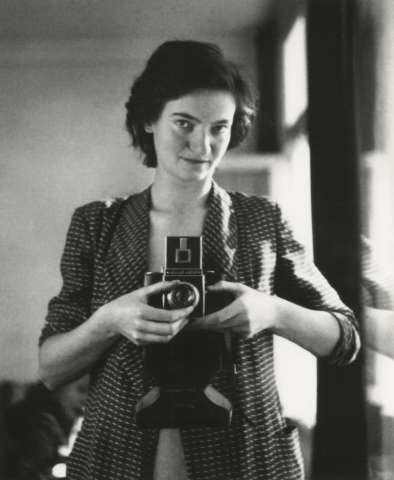
© Photo: Fotostiftung Schweiz, Winterthur, © Marianne Breslauer / Fotostiftung Schweiz
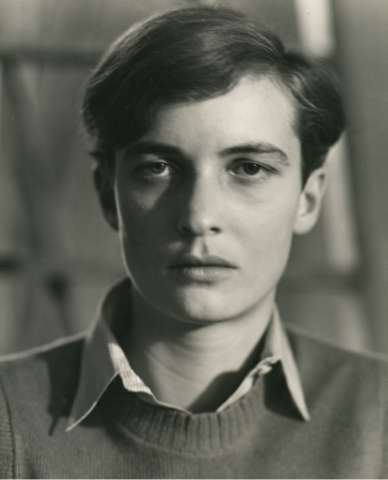
Marianne Breslauer, Annemarie Schwarzenbach, Berlin, 1932, silver gelatin print, 22.7 x 17 cm, © Photo: Fotostiftung Schweiz, Winterthur, © Marianne Breslauer / Fotostiftung Schweiz
Breslauer described Annemarie Schwarzenbach’s look: “She had the same effect on me as she had on everybody: that curious mix of male and female. She reminded me of the image I have of the Angel Gabriel in Paradise. […] Not at all like a real human being, but more like a work of art.” Breslauer’s photos broadened the appeal of Schwarzenbach’s androgynous beauty and affectlessness. This cool airbrushed look chimed with the traumatised aesthetic of the Bauhaus: stripped down, disengaged, clean lines, low on make-up. A full-page portrait of “The writer Annemarie Schwarzenbach” appeared in the October 1933 edition of Uhu magazine, Breslauer’s photo credit withheld because of race laws.
Annemarie Schwarzenbach (1908-1942) was a Swiss writer, photographer and traveller who had published two novels, the second in March 1933, just before her trip to Spain with Breslauer. The typescript of Flucht nach oben, her third book, is dated “Le Lavandou, 10 May 1933”. Annemarie came from a wealthy Zurich family of silk industrialists and was friends with Klaus and Erika Mann and some of the German writers exiled in Sanary-sur-mer in the south of France in the early thirties. She was just beginning to find her feet as a journalist, and as a photographer, and would go on to report from and travel extensively in the Middle East, fascist Europe and Roosevelt’s America.

Annemarie Schwarzenbach, possibly photographed by Barbara Hamilton-Wright
Marianne Breslauer had followed the advice of Man Ray, whom she met as a student in Paris, and who encouraged her to find her own path in the field of photography that had fascinated her since her teens. This fortuitously took her in the direction of photojournalism and portraiture. In Berlin she began photographing her “New Woman” friends – as much a social movement as a revolution in feminine style for a particular social class.
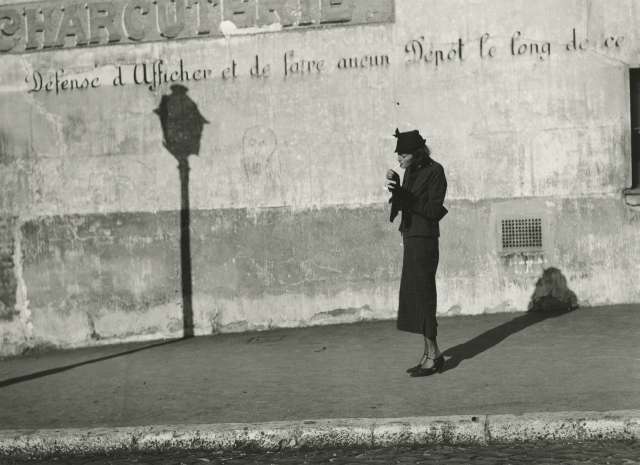
Marianne Breslauer, “Défense d’afficher”, Paris, ca. 1936, silver gelatin print, 20.1 x 27.7 cm, © Photo: Fotostiftung Schweiz, Winterthur, © Marianne Breslauer / Fotostiftung Schweiz
Much propagated by magazines, the New Woman look sold an urban myth of sexual liberation and financial independence characterised by leisure, sport and cars – short hair parted on the side, the bathing hat worn as a fashion statement, men’s shirts, jackets and wide sailor’s trousers, motoring as an expression of new-won freedoms. The style was aspirational and a long way from the reality of rural and working women, some 1.5 million of whom were employed in greater Berlin at the time, a third in the garment industry. Breslauer’s photographs advertised and aestheticised the new look for a particular social class and their aspiring sisterhood. She had a sense of humour, as the photo below testifies (not a quality much noted about Annemarie).
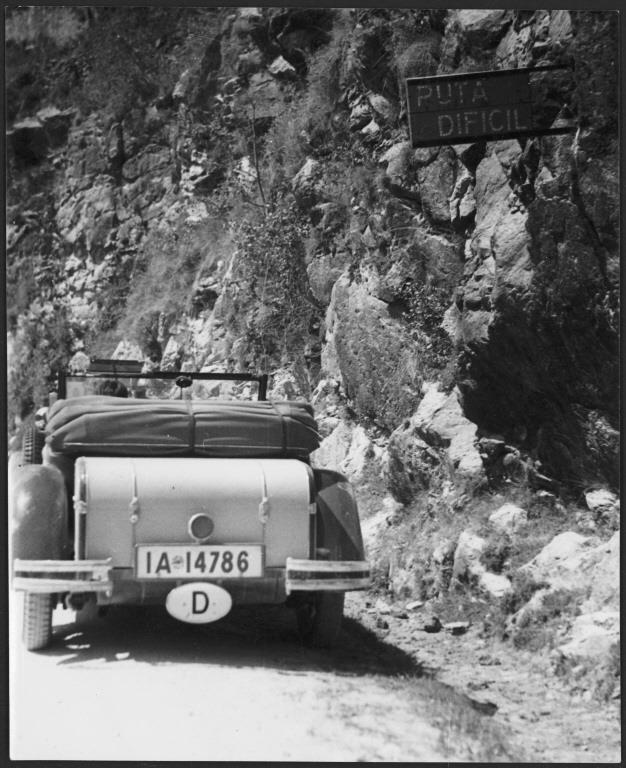
Annemarie Schwarzenbach’s Mercedes Mannheim, Spain, 1933. © Photo: Fotostiftung Schweiz, Winterthur, © Marianne Breslauer / Fotostiftung Schweiz
Annemarie and Marianne embarked in May 1933 on a three-week tour of Spain, Breslauer to take the photographs and Schwarzenbach to write up their travels. The Sun Also Rises (translated into German as Fiesta) was set in Spain, and Hemingway’s stripped down style influenced Annemarie’s own writing and their decision to head for Pamplona. Annemarie was instrumental in putting Breslauer in touch with Lily Abegg of the Academia Photo Agency who was keen on the project. Abegg was the Yokohama-born daughter of a Swiss silk merchant and for many years East Asia correspondent for the Frankfurter Zeitung. As a political science graduate, a career journalist and photographer, drawn towards Asia, Abegg epitomised Annemarie’s canny network skills and her drift towards travel writing, central to both their lives. They had much in common; it appears that Abegg and Annemarie had shared an apartment in Berlin for a brief period. All three of these working lives – Breslauer, Abegg and Schwarzenbach – exemplary of women travelling, writing and photographing between the wars – were marked by Nazi power.
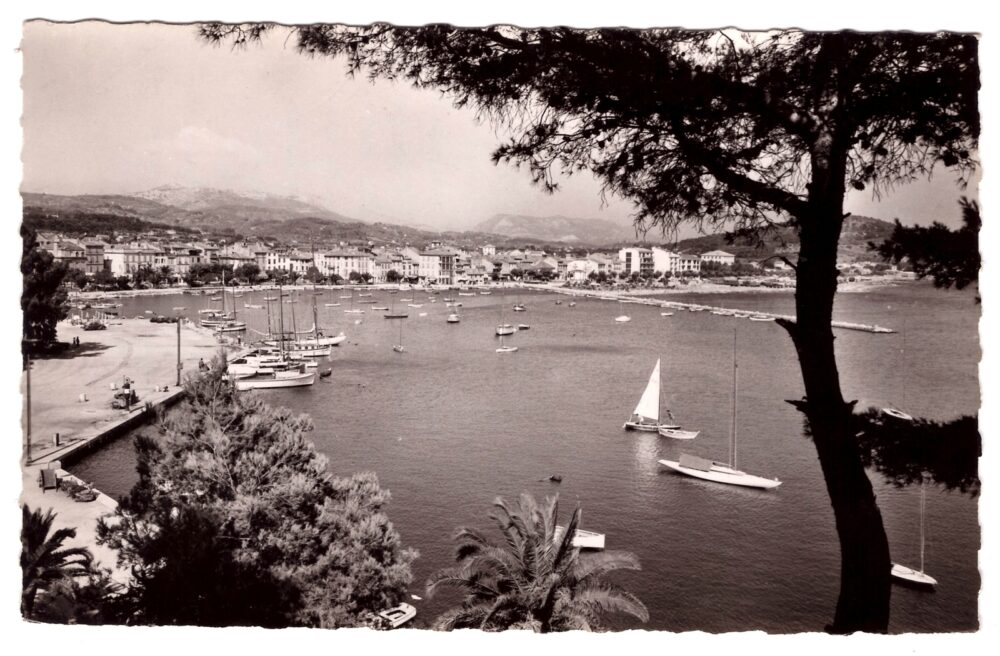
Sanary-sur-mer
The German diaspora had gathered in Sanary-sur-mer and other towns along the Riviera. Klaus Mann was there in advance of his parents, prospecting for a house. It was on this visit, at Les Roches Fleuries, that Annemarie and Klaus battened down on the idea for Die Sammlung, the pre-eminent but short-lived German exile magazine. Was it her idea or was it his? Three weeks beforehand she had corresponded with Klaus about doing something in opposition to political events. The new antifascist magazine, eventually called Die Sammlung (Compilation, Omnibus), ran from September 1933 to August 1935, published by Querido in Amsterdam with significant financial support from Annemarie.
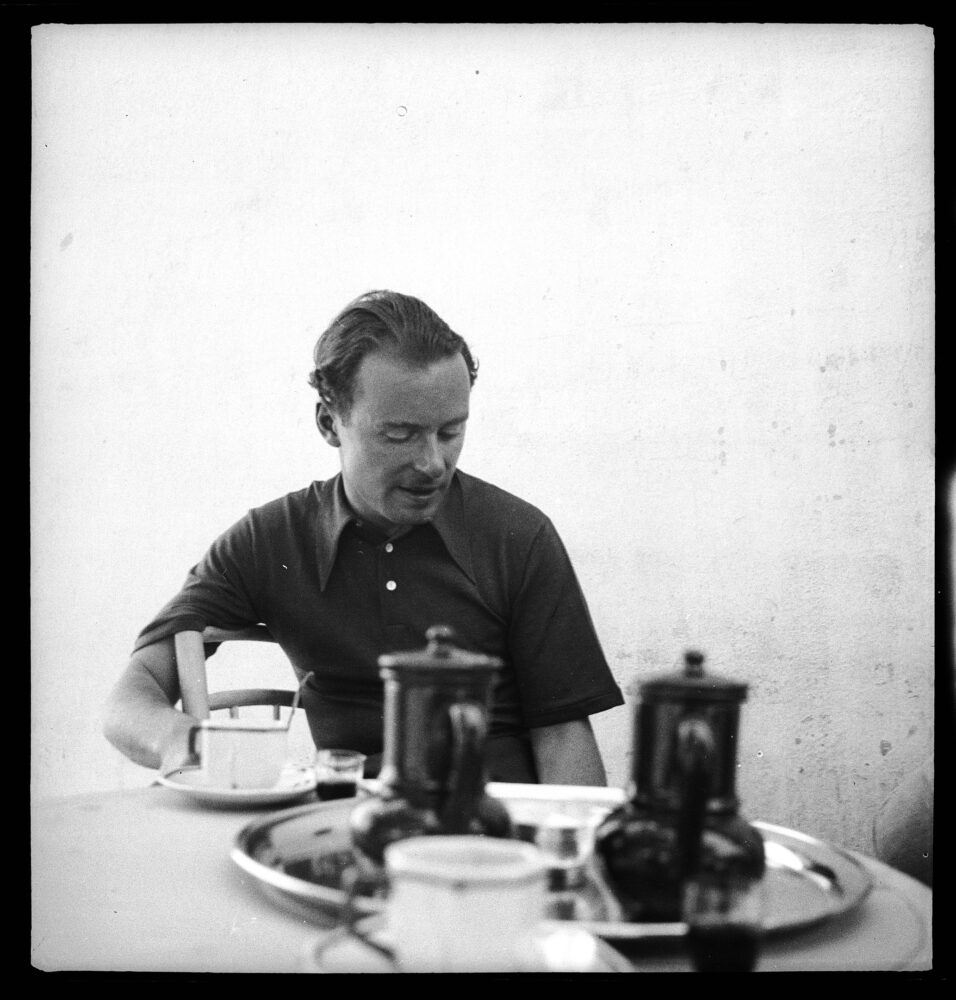
Klaus Mann in Le Lavandou. Photo by Annemarie Schwarzenbach. Swiss Literary Archives, Bern.
His sister, Erika Mann, and her partner, the actress Therese Giehse, were ensconced in the Les Roches Fleuries in Aiguebelle-Le Lavandou. The hotel, wrote Erika, sat “directly above the sea with a touch of Honolulu in the sense that it has small dependencies, with separate entrances and cute plant-covered terraces giving directly onto the beach”. Elizabeth and Michael Mann joined the company. The Mann family was beginning to consider more permanent exile after a lifetime in Munich from where they had been obliged to flee in a hurry. The German exiles were not alone in colonising the Riviera in the years following the Wall Street Crash: expatriate Americans, too, had drifted south, where life was cheaper and less hectic.
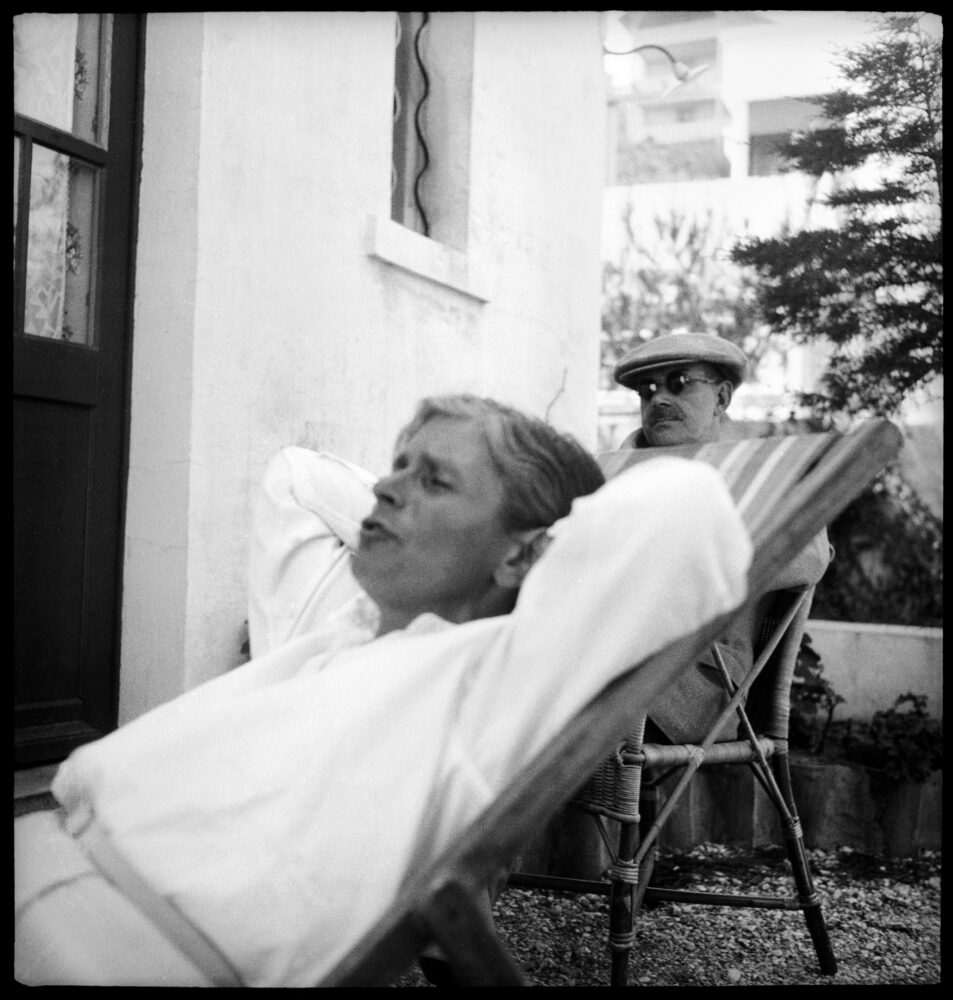
Katia and Thomas Mann, Le Lavandou, 1933. Photo by Annemarie Schwarzenbach. Swiss Literary Archives, Bern.
Schwarzenbach had been infatuated with Erika Mann for a couple of years, ever since the Swiss writer had arranged a speaking engagement for Erika and her brother Klaus in Zurich. Erika kept up their friendship but was cool about the younger Annemarie’s princess ways and her tendency to cause scenes. Besides, Erika was involved with the Munich actress Therese Giehse, who would go on to play Mother Courage in Brecht’s play, premiered in Zurich during the Second World War.
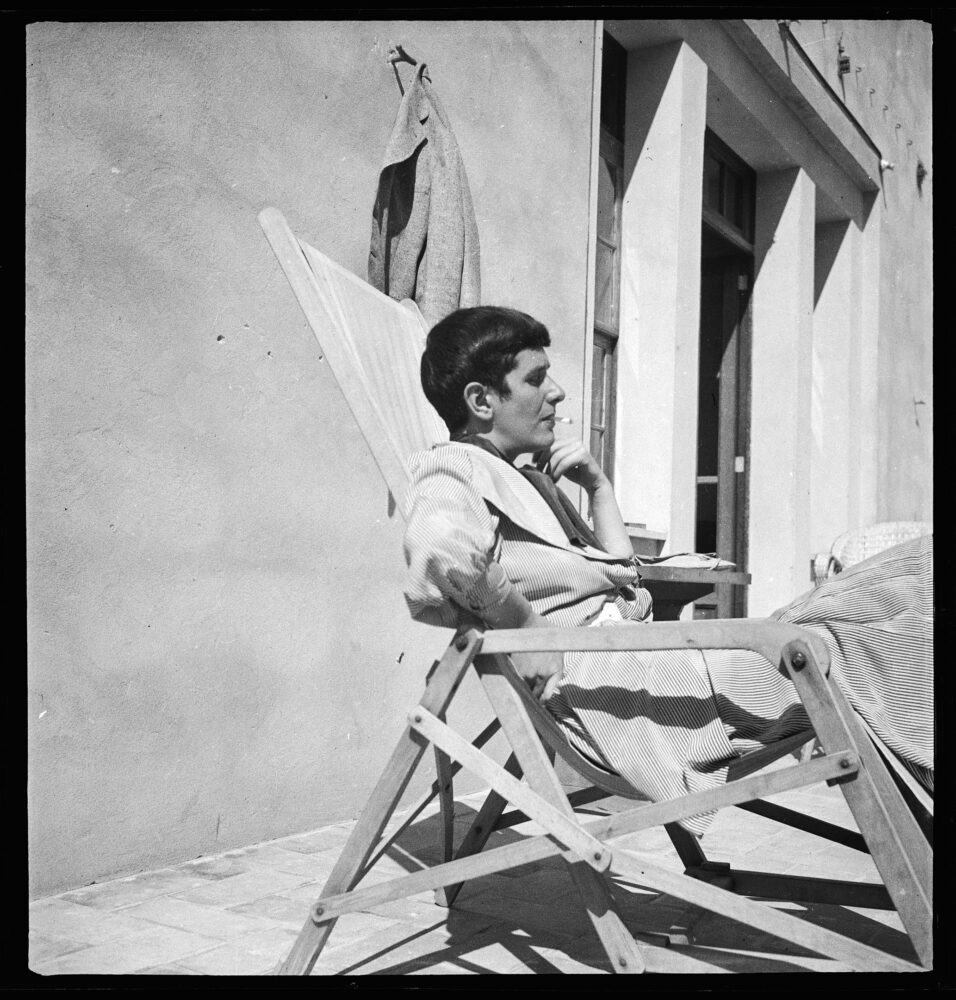
Erika Mann, Le Lavandou, 1933. Photo by Annemarie Schwarzenbach. Swiss Literary Archives, Bern.
By mid-May, picking Breslauer up at the train station in Montpellier, Annemarie at the wheel was motoring south across the Pyrenees into Catalonia. Wherever her classy white Mercedes Mannheim pulled in, with its German registration and attractive driver and passenger, they drew admirers.
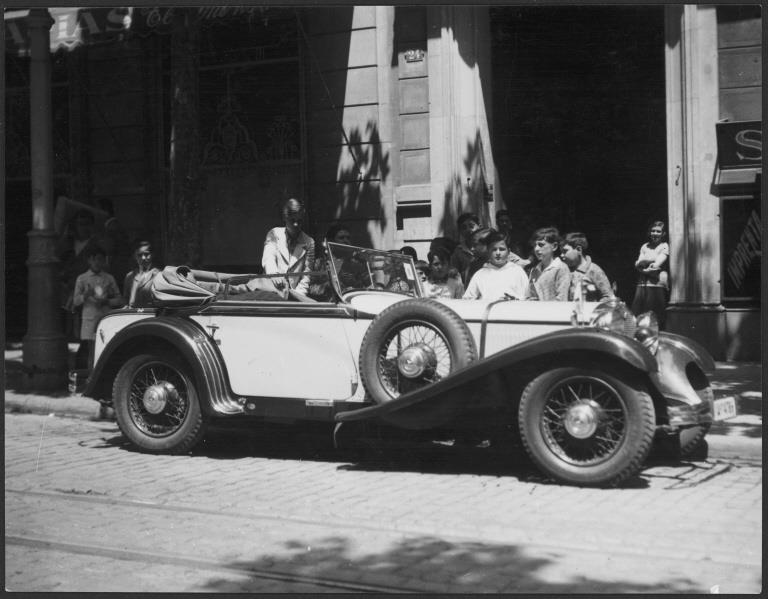
Annemarie behind her Mercedes Mannheim, Spain, 1933. © Photo: Fotostiftung Schweiz, Winterthur, © Marianne Breslauer / Fotostiftung Schweiz
In Girona they visited the Moorish baths – Los Baños Árabes – at the foot of the cathedral, and above Barcelona the 11th century Abbey of Montserrat. In Barcelona, Swiss resident Piet Meyer showed the two women the town and a transvestite show. Annemarie liked to smoke Chesterfields at the wheel, and drove at speed with assurance.
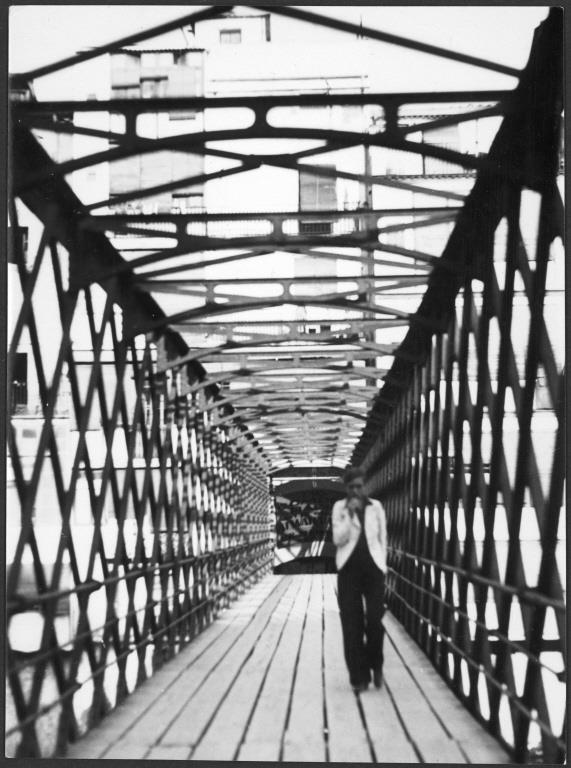
Annemarie Schwarzenbach in Girona, 1933. © Photo: Fotostiftung Schweiz, Winterthur, © Marianne Breslauer / Fotostiftung Schweiz
Marianne Breslauer’s photos are more composed than Annemarie’s; sharper, aware of different qualities of light in the same frame, altogether more professional. In the above shot of Annemarie crossing the Pont de les Peixteries Velles in Girona, Breslauer retains the cool aesthetic of her studio portraits, allowing the struts of the bridge to do the compositional work. She kept her negatives in better shape than Annemarie’s.

Annemarie writing in San Cujat, 1933. © Photo: Fotostiftung Schweiz, Winterthur, © Marianne Breslauer / Fotostiftung Schweiz
Annemarie’s travelling eye was often drawn to schoolchildren but also to the plight of girls in education – a focus sustained later in Persia, Afghanistan and the United States. “For Spanish girls there are hardly any good schools: they are taught deportment and their prayers. But all that goes by the wayside in the small country towns of northern Spain where the young girls between fourteen and twenty are as cheeky, loud and sassy as nowhere else.”
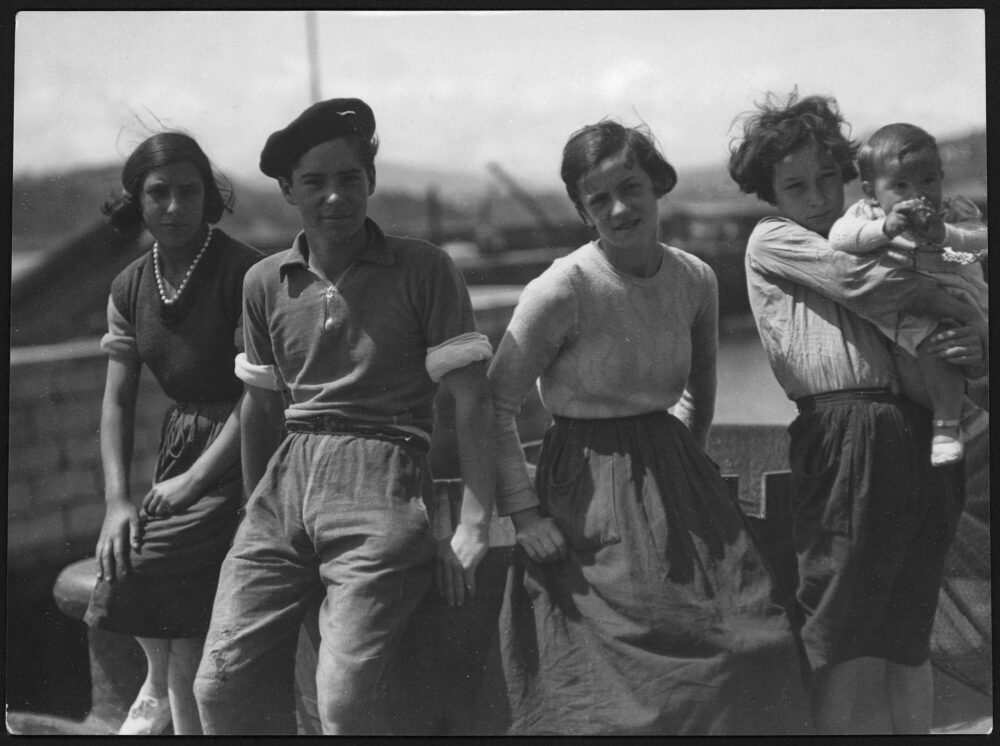
Group of young people, San Sebastián, 1933. Photo by Annemarie Schwarzenbach. Swiss Literary Archives, Bern.
They travelled along the southern slopes of the Pyrenees close to the French border, through Puigcerda and Seo de Urgel, enjoying driving on the white, hairpinning, almost deserted roads in the direction of Andorra. In the backcountry, encountering gypsies with wild hair and dirty hands, it is clear that the lure of nomadic life has taken hold of her imagination:
They overwhelmed us like wolves, we weren’t even able to take photographs… And here in the small working-class towns of the western Pyrenees all we come across is a lone woman with a nursing child who wants to read our fortune, just like in Paris or Berlin.
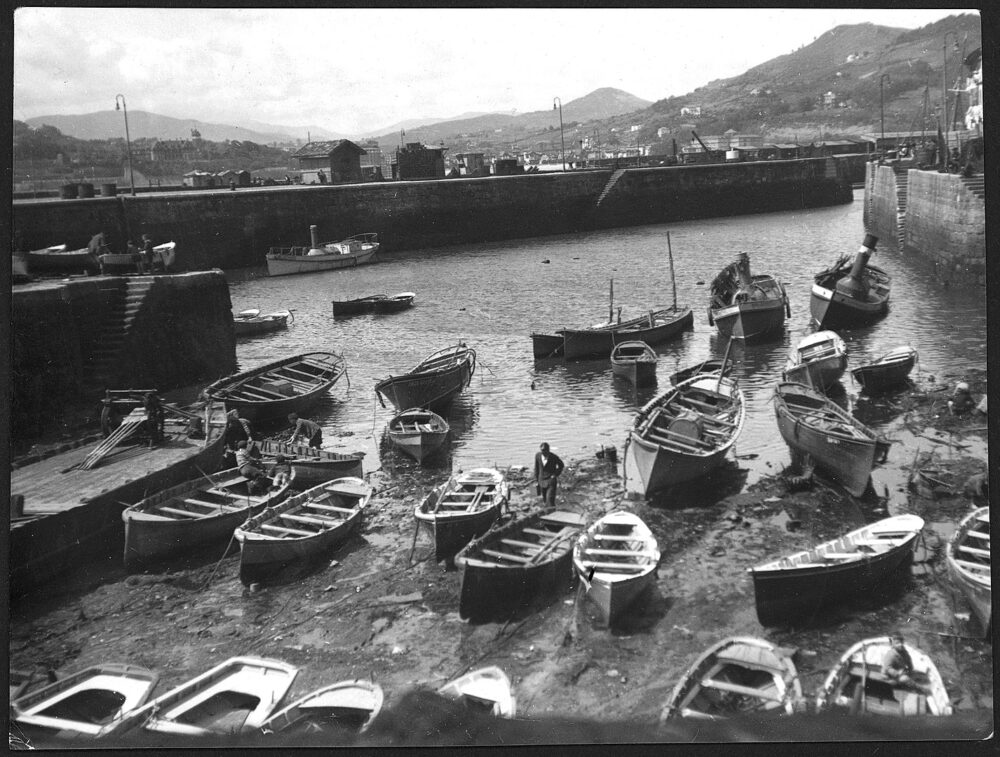
The harbour at San Sebastián, 1933. Photo by Annemarie Schwarzenbach. Swiss Literary Archives, Bern.
In Pamplona and San Sebastián they followed in Hemingway’s footsteps. There were no bulls – it was not the season – but they stayed in the Hotel Quintana where Hemingway’s Americans fraternised with bullfighters. Glossed as Hotel Montoya, Hemingway described its charm:
I had stopped at the Montoya for several years. We never talked for very long at a time. It was simply the pleasure of discovering what we each had felt. Men would come in from the distant towns and before they left Pamplona stop and talk for a few minutes with Montoya about bulls. These men were aficionados. Those who were aficionados could always get rooms even when the hotel was full.
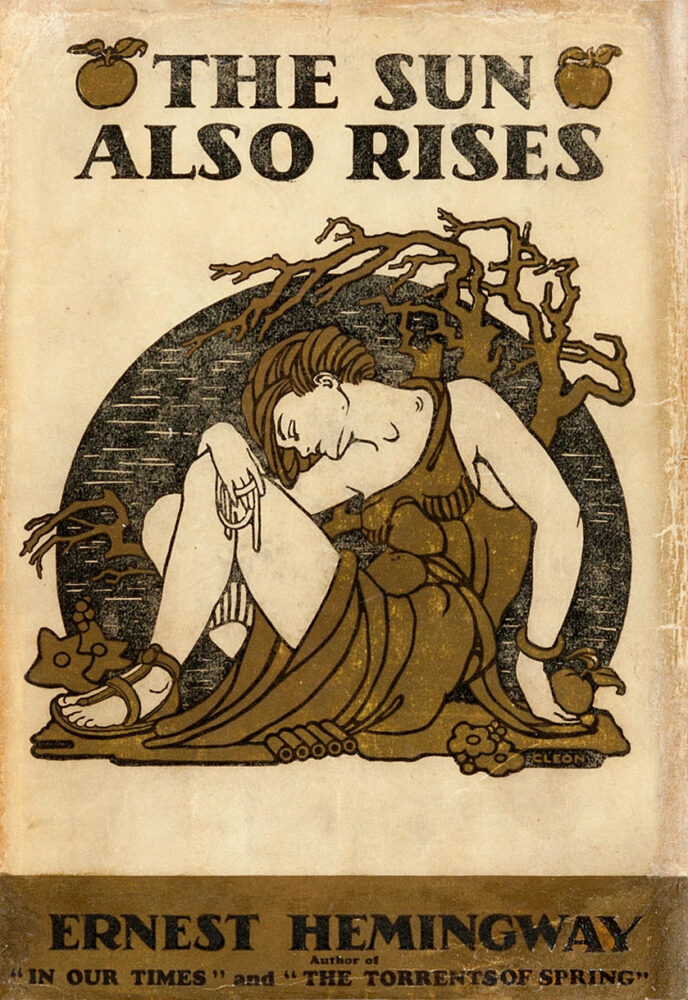
First edition of Ernest Hemingway’s The Sun Also Rises (1926), set partly in Pamplona.
Annemarie wrote not so much as a reporter but in the more personalised feuilleton style familiar to continental newspaper readers, what we might now call an op-ed piece. Her writing from Spain takes on local colour with no pretensions to profundity:
The Basques drink wine from skins, sport berets and long black coats, and speak the most impenetrable language we have heard so far. They travel in from the countryside by bus and head to market in Pamplona, to play pelota or for Sunday bullfights. Pamplona is animated and cheerful, the cafes lively, and the big pelota courts host professional games and players every afternoon. Inveterate gamblers lose as much here as in Monte Carlo or at the Auteuil racetrack. We’re staying at the Hotel Quintana where the matadors put up and negotiate their next engagements with their agents.

Spanish soldier, 1933. Photo by Annemarie Schwarzenbach. Swiss Literary Archives, Bern.
In Zurich, on the return leg, Marianne Breslauer met her husband-to-be, the art dealer Walter Feilchenfeldt, and began her long exile from Germany. “The Nazis were in power, the press in Germany was the same, and the Academia Agency no longer saw any possibility of publishing my photos, unless I agreed to adopt the name Annelise Brauer… so-called non-Aryans were no longer allowed to be published.” Breslauer, baptised and brought up a Christian, stuck to her principles. “That meant that my photos, for the people who had contracted us, were lost. You need to remember that in 1933 we had no doubts about what was going to happen, or what could happen later.” Her photography career, begun in Paris under Man Ray and capturing Weimar womanhood, had effectively come to an end. She married Feilchenfeldt in 1936. It was many decades before her photographs of Annemarie Schwarzenbach and of their motor flight through northern Spain came to light once more.
Works cited
Marianne Feilchenfeldt Breslauer, Bilder meines Lebens: Erinnerungen (Wädenswil: Nimbus, 2012).
Carla Mitchell & John March, Another Eye: Women Refugee Photographers in Britain After 1933, catalogue for the Insiders/Outsiders festival, March 2019-2020, https://www.anothereye.org/introduction
Annemarie Schwarzenbach, “Von Mittelmeer zum Atlantischen Ozean” in Insel Europa: Reportagen und Feuilletons 1930-1942 (Basel: Lenos Verlag, 2005) p. 45.
Ernest Hemingway, The Sun Also Rises (New York: Scribner, 1996), p. 123.

